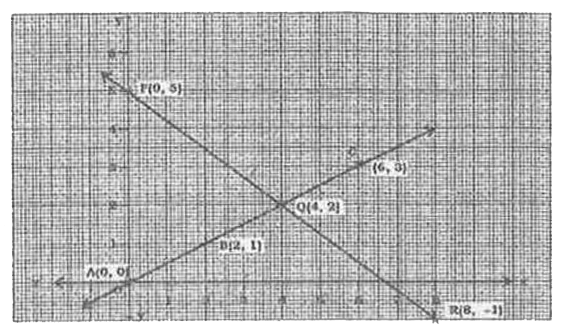Which of the following cannot be the probability of an event?
(A) 23
(B) −1.5
(C )15%
(D) 0.7Solution in Kannada
23
−1.5
15%
0.7
The correct Answer is:B
Step by step video & text solution for Which of the following cannot be the probability of an event? (A) 2/3 (B) -1.5 (C ) 15% (D) 0.7 by Maths experts to help you in doubts & scoring excellent marks in Class 10 exams.
Updated on:21/07/2023Topper's Solved these Questions
- PROBABILITYBOOK - CPC CAMBRIDGE PUBLICATIONCHAPTER - PROBABILITYEXERCISE - EXERCISE 14. 2 (OPTIONAL)
5 Videos
- PRACTICE QUESTION PAPER 13BOOK - CPC CAMBRIDGE PUBLICATIONCHAPTER - PRACTICE QUESTION PAPER 13EXERCISE - ANSWER THE FOLLOWING QUESTIONS
34 Videos
- QUADRATIC EQUATIONBOOK - CPC CAMBRIDGE PUBLICATIONCHAPTER - QUADRATIC EQUATIONEXERCISE - EXERCISE 10.4
5 Videos
Similar Questions
Two customers shyam and Ekta are visiting a particular shop in the same week (Tuesday to Saturday) . Each is equally likely to visit the shop on any day as on another day. What is the probability that both will visit the shop on (i) the same day ? (ii) consecutive day ? (iii) different days ?
View SolutionThe given graph represents a pair of linear equations in two variables : write how many solutions these pair of equations have

View SolutionFind the nature of the roots of the following quadratic equations. If the real roots exists, find them: (i) 2x2−2x+5=0
(ii)3x2−4√3x+4=0
(iii)2x2−6x+3=0
View SolutionWhich of the following cannot be the probability of an event? 23 (b) −1.5 (c) 15% (d) 0.7
View SolutionThe value of |[a,a+d,a+2d] , [a+d,a+2d,a+3d] , [a+2d,a+3d,a+4d]|+|[b
View SolutionWhich of the following cannot be the probability of an event : (A) 23 (B) –1.5 (C) 15% (D) 0.7
View SolutionIn CH_(3)CH_(2)Br,% of Br is
View SolutionWhich of the following cannot be the probability of an event?
(A) 23 (B) −1.5 (C) 15% (D) 0.7
View SolutionWhich of the following cannot be the probability of an event?
(A) 23
(B) −1.5
(C )15%
(D) 0.7
View SolutionWhich one of the following is more reactive towards SN2 mechanism.
((CH3)3C−Br). ((CH2)3CH−Br). ((CH3)CH2−Br). (CH_3-Br).
View Solution1) Fragmentation () a) Planaria br 2) Unripe fruits () b) Yeast br 3) Desire () c) Spirogyra br 4) Reproduction () d) Watermelon br
View Solution[" Which alkyl bromide will yield only one alkene upon "E_(2)" elemination? "],[[" 1) "," ( "" Br "," 2) "," Br "" 3) "," Br "," ( "" ) "," ( Br "]]
View SolutionWinch of the following cannot be the probability of an event?(A) 23 (B)1.5 (C) 15% (D) 0.7
View SolutionFind correct features w.r.t. most advanced type of placentation. Br a. Parietal in Argemone. Br b. Basal in cereals. Br c. Axile in solanaceae. Br d. Unilocular ovary. Br e. Ovary with single ovule
View SolutionWhich of the following is the correct sequence of events in the origin of life? a. Reducing atmosphere. Br b. Origin of chemoautotrophs. Br c. Origin of genetic material. Br d. Origin of chemoheterotrophs.
View SolutionHow many of the following are protein digesting enzymes secreted by Intestine? Br a. Secretin, b. Trypsin, br c. Pepsin, br d. Sucrase.
View Solution
